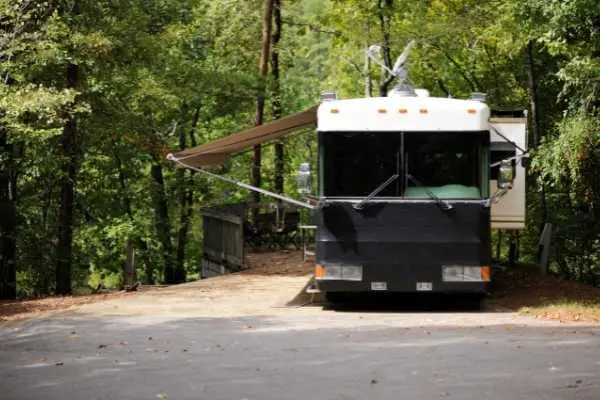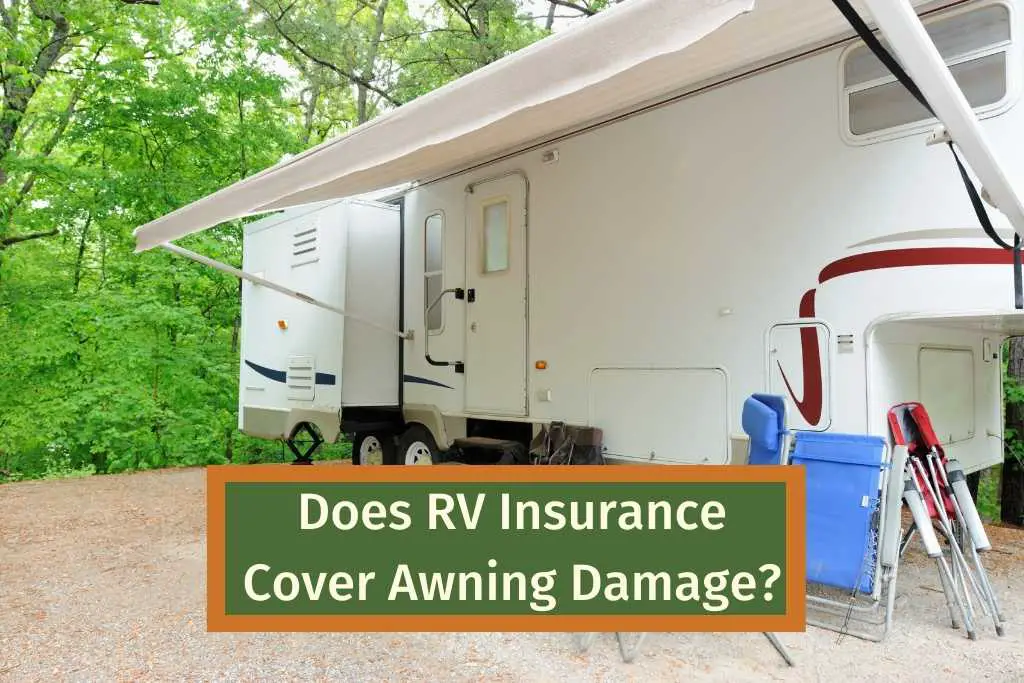RV insurance is difficult to get your head around and one of the most common questions is: does RV insurance cover awning damage?
RV insurance typically covers the RV’s contents, but does it cover an awning? Learn more about what you can expect by reading this article.
If anything were to happen to your awning, would you be able to get reimbursed for damages up to the insurance limit?
What is an RV awning, and how does it work?
An RV awning is an accessory that people use to keep the sun out of their eyes, protect the RV from sunlight, and for shade.
RV awnings are mostly used to expand the area of your RV and incorporate the outdoors into your living area. If you want to enjoy your time outside of the comfort of your RV, you will need an RV awning. An RV awning can provide protection by blocking out any unwanted weather patterns, while also providing protection from pesky bugs, sun, and wind.
RV awnings are typically made out of canvas or a material like polyester, they extend from the side of your RV to provide a temporary roofed area outside. They are held in place with poles that attach to your RV or the ground.
You can get electrical or manual awnings and this usually relates to how they extend and retract, either automatically or with a pulley system.
Does RV insurance cover awning damage?
The cost of awning damage can be significant, and because it is usually made from canvas it can be easily damaged.
Awnings are an important outdoor amenity for the motorhome owner because they provide shelter from the sun and offer protection against rain. The cost of an awning repair ranges anywhere from $500 to $2,000.
Your awning may not be covered through your RV insurance, they usually are covered but in some cases you may have to add this onto your RV insurance.
Awning cover is something you will want to verify with your insurance company before making any decisions.

Does RV insurance cover general storm damage to RV awning?
If your RV insurance covers the awning then you will also need to check that it covers storm damage. Most RV insurance covers damage caused by wind and hail so you should be covered.
Remember to be prepared for any storms as the insurance won’t cover any storm damage caused from leaving doors, windows and vents open.
Just check the particular in you insurance policy, it’s always beneficial to make sure that storm and awning damage is included in your policy.
General Tips for Protecting Your RVs Awning
If you protect your RV’s awning, you will not only save money in the long-run, but you will also enjoy years of use. An unprotected awning can be damaged by wind and sun exposure, which can lead to expensive repairs or replacements.
To prevent this from happening to your RV’s awning, take the time to cover it when it is not in use.
Know When To Close
The last thing you want is your RV awning open during a full blown storm, make sure that you close it up if a storm is coming to prevent unnecessary damage.
Having the awning out in the sun when it’s not needed can cause unnecessary UV damage, so if you’re not using it retract it.
Practice opening and closing your RV awning so you are familiar with how it works and can do it in a hurry.
Keep it Clean
Keeping your awning clean is an essential part of maintenance. If there are twigs and debris on top and you retract it you could be causing some serious damage. Moisture and water in the awning when retracted can lead to mold and mildew forming.
Wash your RV awning with warm soapy water and air dry fully after every use.
Secure it Correctly
Make sure that your RV awning is secure when out by using awning saver clamps and RV awning deflappers. These clips help secure the awning in place, therefore, reducing wind damage.
You’ll also want to avoid pooling water on top of the awning, you can easily combat this potential problem by setting the awning up with a slight slope to one corner.
Final Thoughts
RV insurance does generally cove awnings, and damage caused to RV awnings from a storm. However, it is always best to check the policy thoroughly as sometimes you will need to add this cover on as an extra.

